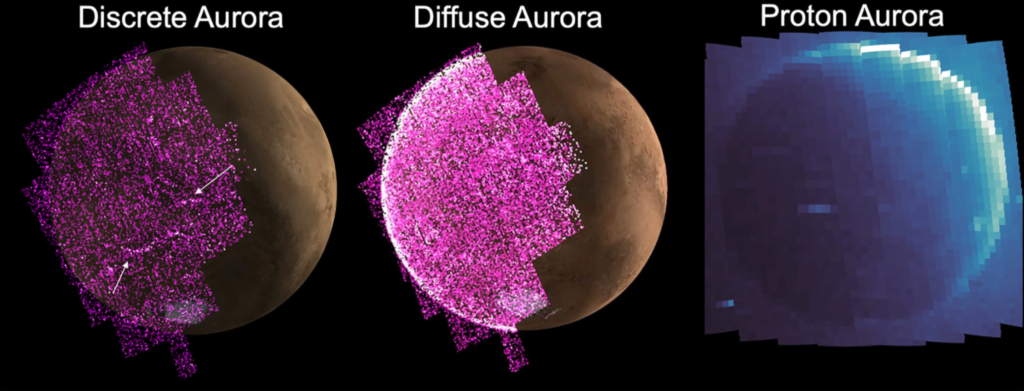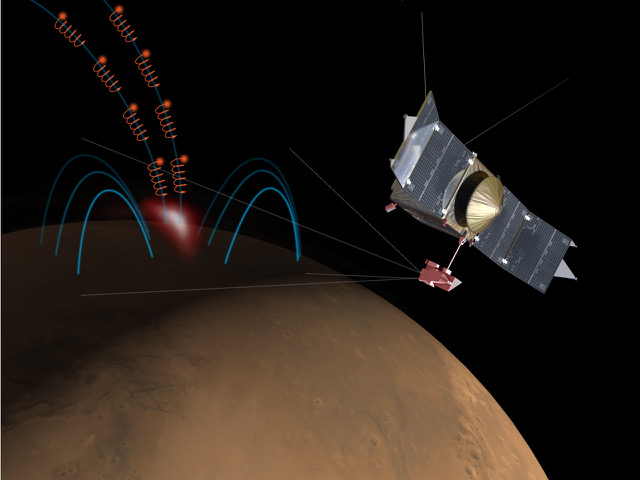
Credit: Nick Schneider, MAVEN IUVS Lead
New MAVEN findings about an unusual form of aurora on Mars have just been published in the Journal of Geophysical Research from Mars researchers Schneider et al. and Soret et al.
“Discrete aurora” are patchy and transient and were once considered rare and unpredictable.
MAVEN’s Imaging UltraViolet Spectrograph (IUVS) has detected hundreds of these auroral events over the last six Earth years, finding that the aurorae are actually very common and predictable near the very strongest magnetic fields.
Aurora occurs from solar particles (via the solar wind) interacting with a planet’s magnetic field. Mars lacks an Earth-like aurora, because it doesn’t have the global magnetic field which typically clusters the aurora events at the poles. Instead, Mars’ aurorae occur near ancient magnetic field lines that are locked into the volcanic plains from billions of years ago when Mars’ magnetic field was stronger.
Under favorable solar wind conditions, discrete auroral events occur most evenings and may last for hours. MAVEN’s observations show that discrete auroras occur at an altitude of ~130 km in the atmosphere, where energetic charged particles cause CO, CO2+, N2, and atomic oxygen to glow.
These results are good news for future Mars astronauts who are missing their home planet. Whether viewed from the surface or orbiting above Mars, the aurora will appear green due to emission from oxygen, the same as Earth’s aurora. Bring a camera!


